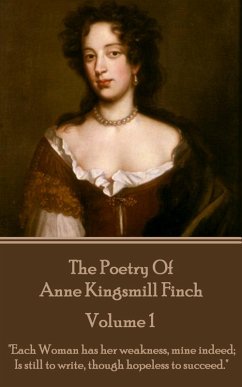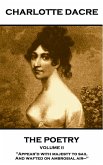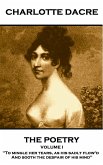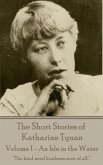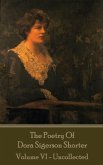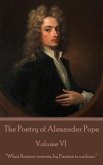Anne Finch (née Kingsmill), Countess of Winchilsea, was born in April 1661, the third child of Sir William Kingsmill of Sydmonton Court and his wife, Anne Haslewood. At age 5 months, Anne's father died. His will required that his daughters receive financial support equal to their brother for their education. Her mother remarried the following year, 1662, to Sir Thomas Ogle. Tragically she was to die in 1664. However shortly before her death she wrote a will giving control of her estate to her second husband. The will was challenged, successfully, in a Court of Chancery by her uncle, William Haslewood. The result was that Anne and Bridget Kingsmill lived with their grandmother, Lady Kingsmill, in Charing Cross, London, while their brother lived with his uncle William Haslewood. In 1670 Lady Kingsmill filed her own Court of Chancery suit, demanding from Haslewood a share in the educational and support monies for Anne and Bridget. The court split custody and financial support between Haslewood and Lady Kingsmill. With the death of Lady Kingsmill in 1672, Anne and Bridget rejoined their brother to be raised by Haslewood. The sisters received a comprehensive and progressive education, a privilege few other women received, and Anne was immersed in Greek and Roman mythology, the Bible, French and Italian languages, history, poetry, and drama. At Age 21 Anne left to take up a position at St James's Palace to became one of six Maids of Honour to Mary of Modena (wife of James, Duke of York and later King James II). Among the other Maids of Honour was the poetess Anne Killigrew. Both Mary and Anne would play significant roles in Anne's development as a writer and, in Mary's case, as a role model for the poems. At the Palace she met and married the courtier and soldier Colonel Heneage Finch. They were betrothed on May 15th, 1684. It was a happy marriage, almost of equals, and despite the difficult political situations they would find themselves in, both with succeeding monarchs and their own Catholic faith in opposition to the increasingly dominant Protestant, it would endure. Anne, it seems, was a victim to recurrent bouts of depression and again this is a theme she explores and documents through her poetry. The effects were made worse by the harassment, abuse and dis-favour she and her husband suffered for long periods and their separation from each other because of this. The late 1600's were not obviously a place where women were treated equally. Anne, with her impassioned belief in social justice did speak out but her position was complicated the politics of the Court, and the literary establishment who surrounded and percolated the Court itself. In April 1690 Heneage Finch was arrested and charged with Jacobitism for attempting to join the exiled James II in France. After his release, with the dismissal of the case, his nephew, Charles Finch, the fourth Earl of Winchelsea, invited the couple to move to the family's Eastwell Park estate in Kent. The Finches took up residence in late 1690 and at last found peace and security. They would live there for the next quarter century. For Anne Finch, life here provided an energy and a supportive home for her literary efforts. Charles Finch was a patron of the arts and, along with Heneage Finch, he encouraged Anne's writing. Her husband's support was also practical. He began collecting a portfolio of 56 of her poems, writing them out by hand and making corrective changes. Significantly he changed Anne's pen name, from "Areta" to "Ardelia". These easier years helped the development of Finch's poetry, and provided her with her most productive writing period. Her work revealed her growing knowledge of poetic conventions, and the themes she addressed included metaphysics, the beauty of nature ("A Nocturnal Reverie"), and the value of friendship ("The Petition for an Absolute Retreat"). On 4 August 1712, their benefactor, Charles Finch, 4th Earl of Winchilsea, died childless. This made Anne's husband, his uncle, the 5th Earl of Winchilsea, and Anne, the Countess of Winchilsea. Whilst this was unexpected it brought with it both benefits (titles and assets) and negatives (the assumption of Charles Finch's financial and legal burdens. These were eventually settled in the Finches' favour in 1720, but not before the endurance of seven years of emotional strain). Anne was not only a poet but a skilled writer of fables and plays. Some of her works were published during her lifetime but most posthumously. With their great range, their wit, their exploration of various poetic forms they have survived to give her an enduring and well won literary legacy. Anne Kingsmill-Finch died in Westminster on August 5th, 1720. She was buried at her home at Eastwell, Kent.
Dieser Download kann aus rechtlichen Gründen nur mit Rechnungsadresse in D ausgeliefert werden.

